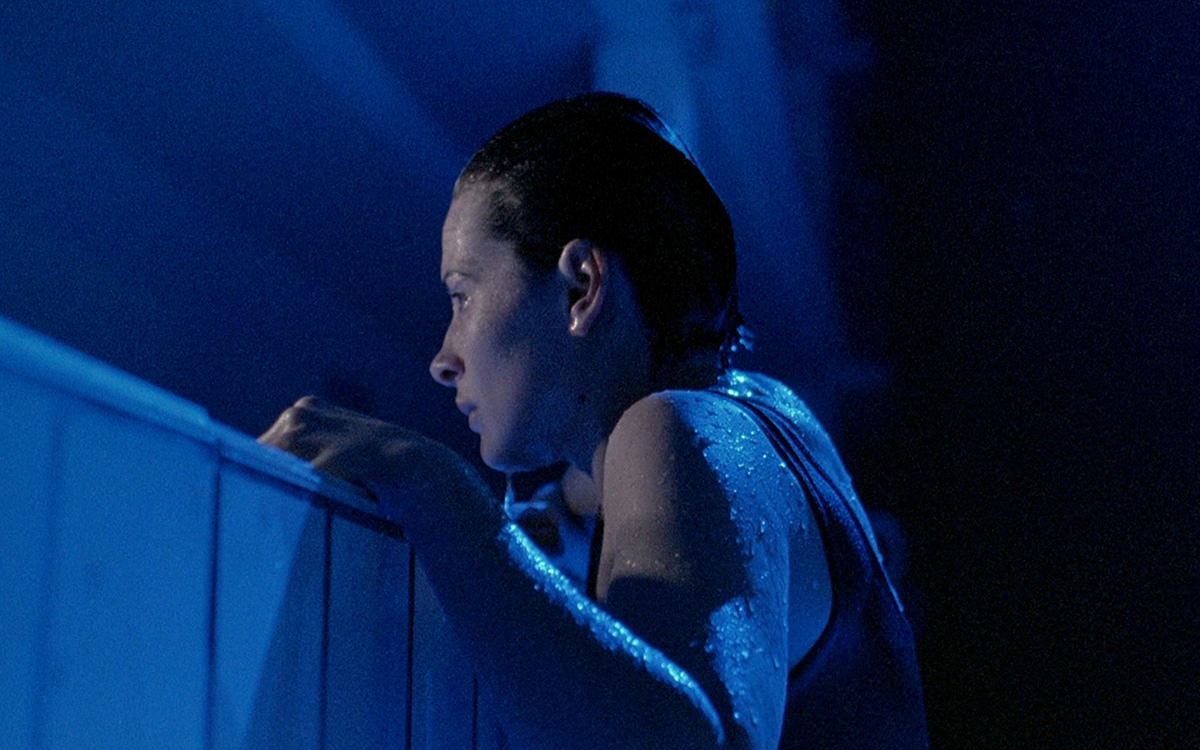2018 Tarkovsky Award 2nd Place: Nicholas Buckwalter
Nicholas Buckwalter (16, Berkeley High School)
The Beauty of Sadness in Kieslowski's BLUE
While a good film draws the viewer into the emotions of the characters, a great film helps the viewer explore his or her own emotions in new and deeper ways. Krzysztof Kieslowski’s “Blue” does exactly this. “Blue” is the first film in Kieslowski’s “Three Colors Trilogy” and possibly the most influential. The film centers around a woman’s response when tragedy overtakes her life. The protagonist, Julie, is overcome with sorrow and depression after her husband and daughter die in a car accident. She responds first by attempting suicide, then by erasing her old life, moving to Paris, and selling all the belongings attached to her now-deceased family. While the plot is straightforward, the characters are complex, the imagery is profound, and the execution is skillful and precise.
The film, which takes place primarily from the point of view of a sorrow-filled protagonist, struck a chord with me because I personally have struggled with depression. While I drew comfort from relating to Julie’s feelings and perspective (despite our very different circumstances), “Blue” ultimately helped me understand my own emotions in a different and deeper way.
Juliette Binoche’s masterful performance and Kieslowski’s skilled direction work together to pull the viewer into a world of depression and sadness that lingers even after the film closes. Binoche perfectly embodies the depressive state of mind. Her stare penetrates deep into the viewer’s darkest places. Through small details like Julie’s fixation on the sugar cube in her coffee or her obsession with the blue chandelier in her neighbor’s apartment, Kieslowski demonstrates her focus on her inward world and the isolation that engenders.
The visual aspects of the film—cinematography, lighting, setting—are also central to its power. Blue light shines and drips around the protagonist, evoking the haunting past she cannot escape. Many images in the film seem to convey a message in and of themselves. The exquisite composition of the shots and settings reveals that sadness itself can be beautiful. Images like the blue-lit swimming pool or the glistening chandelier drip from the screen, creating a powerful visual atmosphere. Many of the shots are so perfectly composed that they could stand alone as paintings.
Music also plays a critical role in “Blue”. Julie’s husband, a composer, leaves her with an unfinished composition which plays throughout the film in revealing ways. In one scene, as Julie stares at her late husband’s piano, the composition plays in the background. When Julie shuts the piano, the music abruptly stops playing. While this is not inherently logical, it perfectly fits the dramatic tone of the scene and demonstrates Kieslowski's directorial genius. This same composition plays throughout the film in different ways, haunting the protagonist and the viewer alike. The music serves as a reminder of the past that Julie cannot erase. In the film’s closing scene, the composition plays in full for the first time, offering an auditory sense of closure even as visual images of the people who have affected Julie throughout her life flash by.
The multiple facets of Julie’s character play out through her various relationships, most powerfully in her interactions with her mother, who suffers from Alzheimer’s. In one sense, Julie’s mother represents liberty in its purest form, free from all form of human connection, memory and thought. As Julie sees this, she comes up against the furthest extreme to which isolation can take you, and is forced to question just how far a person can take the quest for freedom and still remain human.
By contrast, when the stubbornly independent Julie calls her neighbor Lucille in tears asking for help, we see Julie’s more vulnerable side—the part of her that is still open to connection. Julie’s romantic interest, Olivier, initially helps to reveal Julie’s deep sense of isolation after they spend a night together and she promptly makes him leave. Her later acceptance of Olivier and entrance into a relationship with him reveals her newfound hope in life.
While the various technical aspects of “Blue” contribute to its greatness, the authenticity of the characters, relationships and themes left the deepest impression on me. I have often struggled with depressive thoughts. As I entered adolescence, they have grown more frequent, and I often find myself fixated on the negative aspects of life. Sometimes I feel like the blue light that haunts Julie follows me around in my life as well.
Both visually and thematically, “Blue” reveals the unexpected beauty in sadness. The artistry with which Kieslowski renders this complex emotional state helped me understand my own darker aspects in a new way—not as a failure to be overcome or hidden but as a necessary, if difficult, part of being human.


